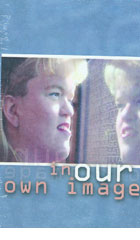
In Our Own Image 2004
Distributed by National Film Board of Canada, 1123 Broadway, Suite 307, New York, NY 10010; 800-542-2164
Produced by Cinemaria in collaboration with the CBC
Directed by Caroline R. Maria
VHS, color, 40 min.
College - Adult
Bioethics, Biology, Disability Studies, Ethics, Eugenics, Genetics
Date Entered: 06/21/2005
Reviewed by Gloria Maxwell, Reference Librarian, Penn Valley Community College, Kansas City, MOIf given a choice, parents would naturally choose to give their child good health rather than a life-threatening disease. That’s the only choice they would make - or is it? Is it possible for parents to make that choice before their child is born? Today, science can make that choice possible for many genetic conditions. And, as research continues, other conditions will be added to that list. While this would seem to be only a positive good, there are gray areas that make these choices problematic. This documentary follows two couples who must struggle with decisions and choices related to their own offspring.
One couple are both dwarfs. Any children they may have can inherit this gene from one or both parents, or not at all. The worst instance is if a fetus develops carrying the gene from both parents, which results in Double Dominance, and this is a lethal condition in which the child’s bones would be crushed, leading to death. In following this couple, their first child displays this condition and they describe their emotions in making the painful decision to terminate this pregnancy. They raise questions about dwarfism in general, and if this might not be a condition that would be eliminated if everyone terminated any fetus that showed even one such inherited gene. While they are opposed to bringing a child into the world with Double Dominance in dwarfism, they are not unhappy with their own condition. They talk frankly about the Little People of America Organization and the improvements being made for “little people.” While dwarfs were exploited in the past (forced to work in a circus or freak show), today their future is very bright.
The documentary also follows a Canadian couple whose first child is born with cystic fibrosis. There is no cure and the life expectancy for such a child is around 36 years. Parents are only able to help buy more time for their child, but they know the child won’t get any better. While they do not really want to knowingly bring another child into the world with this condition, they also worry about making a choice that would resemble the actions sanctioned by Hitler during World War II. While they think it is a good thing to be able to detect the cystic fibrosis gene, they are concerned about other alterations that might result from the growing ability to screen the unborn.